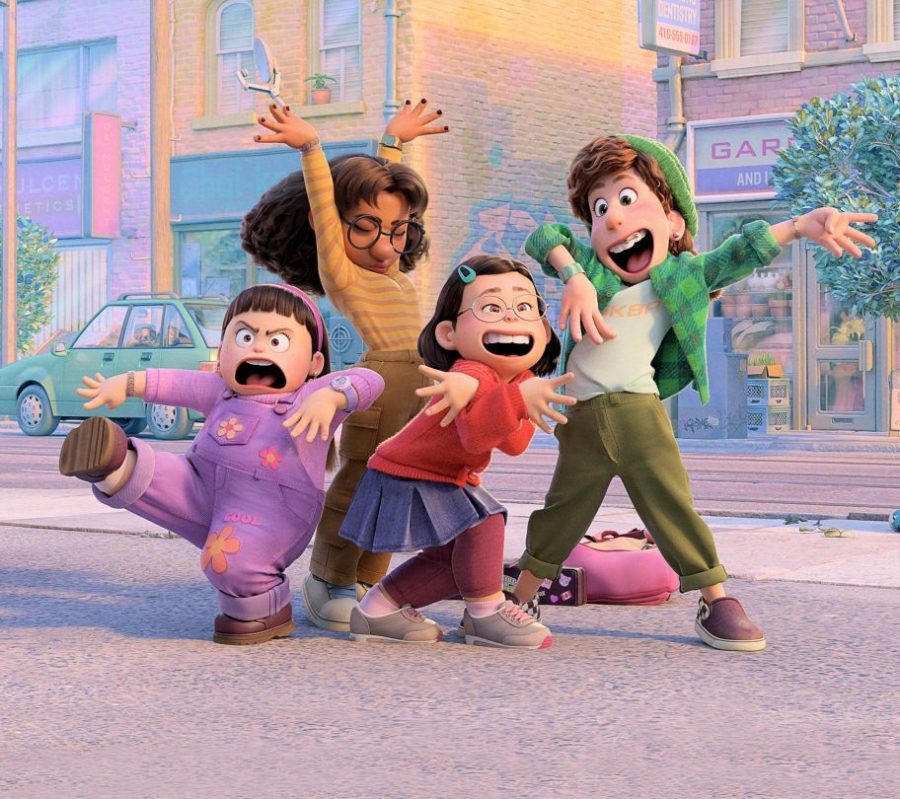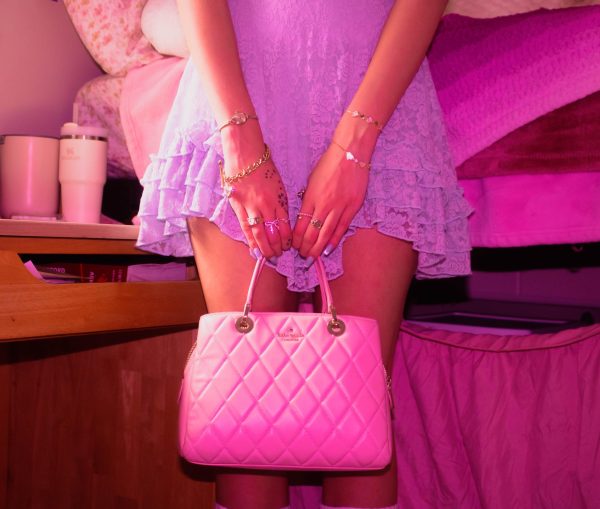Pixar’s “Turning Red” beautifully captures the awkward angst of adolescence
Pixar’s newest animated feature, “Turning Red,” follows Mei Lee, a girl who can transform into a giant red panda.
Mei Lee has a lot going on. While wonderfully confident and comfortable in her dorky persona, she struggles to come into her own as a newly 13-year-old “woman” as she is constantly torn between her loving but overprotective mother and three best friends. Oh yeah, and she poofs into a giant red panda whenever her emotions become overwhelming, which happens as often as you might expect for a hormonal teen.
Middle school, am I right?
Luckily for Mei, the blessing– or curse– of the red panda can be contained through a special ritual the women of her family will perform in a month’s time. But as the weeks pass and Mei realizes there is more to her adorable furry form than unintended destruction, she wonders if going back to the way things were is really what she needs.
“Turning Red” has received some backlash for its references to menstruation and teenage sexuality, and truth be told, the acknowledgment of those sides of adolescence is all but nonexistent in other children’s movies. But normalizing young girls’ periods and newfound interest in romance is clearly a step forward, not back. “Turning Red” features an important representation of both an Asian-Canadian girl and the complex challenges she faces during puberty. The movie’s target audience is experiencing the same things Mei is (well, almost the same, unless there are other panda shapeshifters out there), and “Turning Red” shows them that it’s okay to feel weird and accept both the physical and emotional changes taking place.
There is a lot to unpack in this movie, including the evolution of parent-child relationships, literal and allegorical references to puberty’s problems and feelings of intense isolation and shame. But despite the potentially heavy topic matter, “Turning Red” is yet another example of Pixar’s unique ability to balance solemnity and levity.
The animation is gorgeous, as always, incorporating a style somewhere between 2021’s “Luca” and 2020’s “Soul.” With a healthy dose of early 2000s nostalgia and boy-band culture, the movie somehow manages to make one almost miss those awkward but exciting middle school days.
Mei and her friends’ boundless optimism, energy and endearingly loyal dynamic make the characters easy to sympathize with. Similarly, the deep love Mei’s overbearing mother, Ming, holds for her daughter shines through her constant invasions of the teenager’s privacy. The product of a perfectionist (and in poor Ming’s case, rather unaffectionate) mother herself, Ming serves as a well-meaning antagonist in her daughter’s story. But have no fear– true to form, “Turning Red” addresses Ming’s own latent insecurities by the end of the movie. After all, how can mother and daughter have a truly healthy relationship if they do not understand one another?
“Intergenerational trauma” is perhaps too strong a term for a family whose female members occasionally poof into pandas, but the idea is still visible in “Turning Red.” The shame and, at times, crippling loneliness of such a phenomenon plague the characters, conveniently resulting in severely repressed emotions. In Mei, though, the “curse” meets its match, as her indomitable spirit refuses to be cowed for long. For an outspoken, proudly nerdy girl who never quite fit the mold in the first place, turning into a giant red panda with every mood swing might not be quite the burden her mother saw it as.
You can stream “Turning Red” on Disney+.







